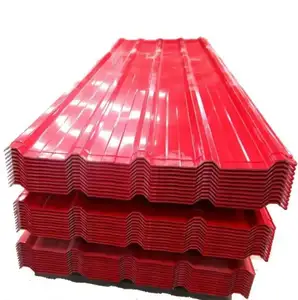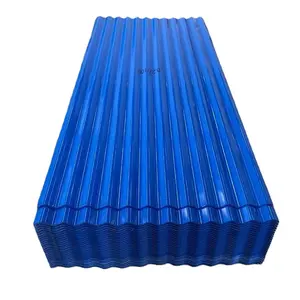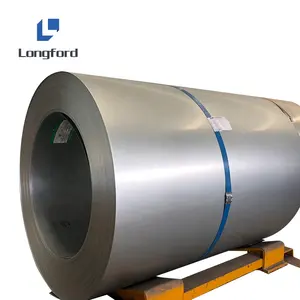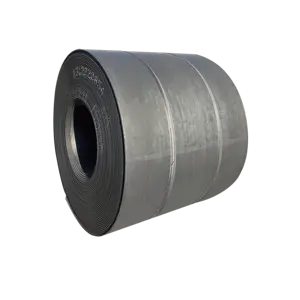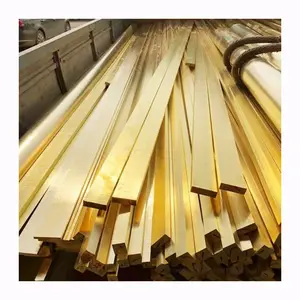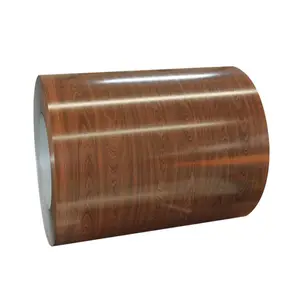Popular in your industry







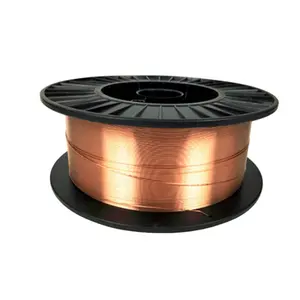











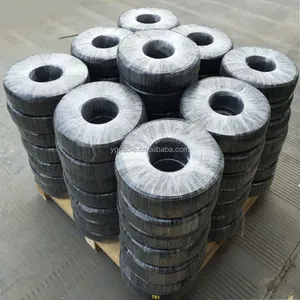



















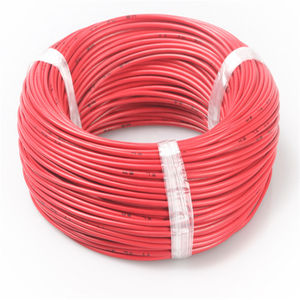































Top categories
About copper wire price per meter
In the intricate dance of global commerce, copper wire plays a pivotal role, threading through the fabric of numerous industries with its indispensable properties. As we stand on the cusp of a technological renaissance, where renewable energy and electric vehicles are becoming the norm, the demand for this versatile metal surges. This comprehensive guide to copper wire pricing per meter will navigate you through the complexities of the market, offering insights into the factors that shape its cost-effectiveness. From understanding copper as a commodity to selecting the right type for your needs, we delve into the nuances of sourcing copper wire on Alibaba.com, ensuring you are equipped with the knowledge to make informed purchasing decisions.
Understanding Copper Wire as a Commodity
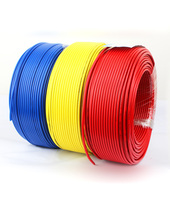
Copper wire, as a commodity, is deeply influenced by global supply-demand dynamics. The market's current state reflects a delicate balance, with industry experts noting a potential deficit due to tight supply against demand. This scenario is shaped by various factors, including the introduction of new mining projects and the operational revisions by leading copper producers.
The significance of copper wire in the market is underscored by its critical role in the energy transition. It is a key component in renewable energy systems, electric vehicle charging infrastructure, and power grids. The demand for copper wire is expected to grow in response to its applications in these areas.
Market volatility for copper is anticipated to persist, influenced by macroeconomic factors such as inflation and interest rate fluctuations. However, the underlying demand for copper wire remains robust, driven by technological advancements and infrastructural developments.
The industry's approach to copper wire as a commodity is also shaped by the permitting processes for mining projects. Efficient and predictable systems are sought to ensure the steady supply of copper, which is essential for maintaining the commodity's market stability and by extension, the pricing per meter of copper wire.
Types of Copper Wire Available on Alibaba.com

Alibaba.com showcases a diverse range of copper wire options to cater to various applications. The selection includes electrical cables with a standard 1.6mm diameter, suitable for household wiring needs. Automotive cables, such as the 12 Gauge Copper Clad Aluminum wire, are available in multiple roll quantities, indicating suitability for vehicular electrical systems.
For specialized industrial applications, enameled copper magnet wire is offered in gauges from 16 to 24, which is commonly used in motor and fan windings. Additionally, the platform lists copper alloy wires like brass durable cutting wire at 0.25mm, which can be used for precision metalworking.
The inventory extends to high-performance wires such as toroidal transformer copper wires ranging from 80W to 1000W, and high-purity, silver-coated annealed copper wires, which are essential in applications demanding minimal signal loss.
Safety-focused options are also available, including fire-resistant twisted pair cables and solid bare copper wires, which are ideal for alarm lines and grounding purposes. For more robust needs, high tensile bare copper electrical cables are listed, which offer enhanced durability.
Alibaba.com also caters to bulk purchasers with offerings like copper scrap wire in bales, and insulated scrap copper wire from verified suppliers, demonstrating the platform's capacity to serve both large-scale recycling operations and individual requirements.
Solid vs. Stranded Copper Wire
When considering copper wire for various applications, understanding the distinction between stranded and solid wire cable is crucial. Stranded wire is composed of numerous small copper wires twisted together, offering enhanced flexibility. This makes it suitable for situations where the wire needs to bend or move, such as in patch cords. However, this flexibility can come at the cost of durability, as the individual strands may break over time.
In contrast, solid wire consists of a single, solid strand of copper, which provides less flexibility but greater durability. Solid wire maintains its shape over time, making it ideal for permanent installations where the wire will not be moved frequently. It also tends to have better electrical conductivity and can carry more current than stranded wire, with lower attenuation and resistance, beneficial for stable electrical performance across a range of frequencies.
The choice between stranded and solid wire depends on the specific needs of the installation. For environments that require frequent reconfigurations or where cables are manipulated often, stranded wire is preferable. On the other hand, solid wire is better suited for installations that demand rugged performance with minimal bending. Each type has its own set of considerations, including the impact on signal quality over distance and the potential need for de-rating the overall channel length in certain applications.
Gauge and Diameter Variations
American wire gauges (AWG) serve as a standardized scale for wire conductor sizes, where a smaller gauge number indicates a larger wire diameter. This inverse relationship is crucial when selecting copper wire for various applications, ensuring that the wire size aligns with the project's requirements. The gauge system is essential for understanding the thickness of copper wires, which directly influences their electrical resistance and strength. When considering copper wire for purchase, especially in terms of price per meter, it's important to reference a gauge conversion chart to make an informed decision about the wire size needed for specific uses.
Applications of Copper Wire in Various Industries

Copper's versatility is showcased by its comprehensive use across various industries. Its superior electrical conductivity is essential in the electrical industry, where it forms the backbone of high voltage transmission cables and microcircuits. The metal's favorable mechanical properties at varying temperatures, coupled with its resistance to corrosion, make it a material of choice for electrical generation, transmission, and usage. In the automotive sector, copper is integral, found in wiring harnesses, alternator windings, and as a component in alloys for engine blocks and other castings. The demand for copper is also rising in electronic and computer technology, where advancements have leveraged copper's properties to enhance performance and miniaturization, such as in semiconductor chips.
Industrial applications of copper are just as varied, including heavy-duty connectors, heat exchangers, and various engineering components like valves and pumps. The metal's non-reactivity with insulation materials and its ability to maintain low contact resistance over time ensure safety and durability in these applications. Moreover, copper's thermal conductivity positions it as the first choice for heat exchanger applications, such as in the innovative brazed copper-brass automobile radiators. The recyclability of copper further underscores its role in sustainable industry practices, as it can be efficiently reused without loss of properties.
Key Features to Consider When Selecting Copper Wire
When selecting copper wire for various applications, it's crucial to understand the inherent features that contribute to its performance. Copper's high conductivity is a defining characteristic, making it a preferred choice for electrical applications. Its versatility is evident in its ability to require less insulation and its capacity to be stretched effectively, which are significant considerations for usage. The material's malleability and ductility are essential for applications that demand bending and shaping the wire without breaking. Tensile strength is another key feature, indicating the wire's ability to withstand tension without snapping. Additionally, copper's resistance to creep and corrosion ensures longevity and reliability in environments that could degrade lesser materials. Compatibility with alloys expands the range of applications for copper wire. These features collectively define the suitability of copper wire for specific applications and should be carefully evaluated when making a selection.
Material Purity and Conductivity
Understanding the material purity and conductivity of copper wire is crucial for various applications. Copper's electrical conductivity is a key attribute, indicating how well the material facilitates the flow of electric charge. This property is quantified by the ratio of current density to electric field strength, typically measured in Siemens per meter. Copper's standard of conductivity is benchmarked against the International Annealed Copper Standard (IACS), where annealed copper is set as the reference point at 100% IACS at 20°C. The conductivity of other metals is compared to this standard, with pure copper often exceeding 100% IACS due to advancements in refining processes. Electrical resistivity, the opposition to current flow, is the inverse of conductivity. The resistivity of copper increases with temperature, as imperfections in the atomic lattice structure, such as dislocations and vacancies, hinder electron movement. These factors are vital when selecting copper wire for electrical applications, as they directly impact efficiency and performance. When sourcing copper wire, it's important to consider these electrical properties, which are indicative of the wire's quality and suitability for specific uses.
Insulation and Coating Types
Copper wire insulation is a critical component for electrical safety and durability. Insulation prevents the copper from corroding due to exposure to elements like water, which can increase resistance and risk of fire. It also safeguards against the dangers of electrocution when handling live wires. The insulating materials used on copper wire are generally categorized into two types: thermoplastic and thermoset. Thermoplastic insulation becomes soft and pliable at high temperatures, making it less suitable for environments with extreme heat. On the other hand, thermoset insulation does not soften in high temperatures, maintaining its properties and a rubbery texture even under thermal stress, which is ideal for high-heat applications.
The three primary types of copper wire insulation include plastics, rubbers, and fluoropolymers, each with its specific applications and benefits. Plastics are commonly used for their flexibility and cost-effectiveness, while rubber insulation offers enhanced durability and flexibility. Fluoropolymers provide exceptional resistance to chemicals, heat, and weathering, making them suitable for harsh environmental conditions. When selecting copper wire for a project, considering the type of insulation is crucial, as it directly impacts the wire's performance and safety in its intended application.
Advantages of Sourcing Copper Wire Through Alibaba.com
Alibaba.com stands as a prominent marketplace for a diverse range of copper wire products, catering to various industrial needs. Customers can access a broad spectrum of copper wire types, including solid, stranded, enameled, and bare copper options. The platform's global reach connects buyers with suppliers from different regions, offering copper wire with varying gauges, diameters, and insulation types to suit specific applications. The availability of copper wire in bulk quantities and the potential for competitive pricing make Alibaba.com a strategic source for businesses looking to optimize their procurement process. Moreover, the platform's assortment includes copper wire with different purity levels, ensuring that clients can find materials that meet their conductivity and performance requirements. By sourcing through Alibaba.com, businesses can benefit from the convenience of online transactions and the opportunity to compare offerings from multiple suppliers, enhancing their purchasing decisions.
Navigating Copper Wire Pricing Per Meter on Alibaba.com
Navigating the pricing of copper wire per meter on Alibaba.com involves understanding the various factors that influence cost. The platform offers a diverse range of copper wire options, from single-core PVC house wiring cables to multi-core flexible cables, catering to different industrial needs. The diameter of the wire, indicated in millimeters, and the type of insulation used, such as PVC or enameled coatings, play a crucial role in determining the price. Additionally, the copper content, often highlighted as a percentage, affects both the conductivity and the cost. For instance, wires with a higher copper content, which is close to pure copper, tend to be priced higher due to their enhanced electrical properties.
Buyers can find copper wires in various gauges and configurations, including solid and stranded types, each suited for specific applications. The gauge of the wire, which relates to its thickness, can impact the price, with thicker wires generally costing more due to the greater amount of copper used. Alibaba.com's inventory includes a wide selection of gauges and the flexibility to choose based on project requirements. The platform's listings often mention the wire's applications, such as for house wiring, automotive, or electrical installations, providing buyers with the context to make informed purchasing decisions.
The platform's user-friendly interface allows buyers to compare prices and features of copper wire from various suppliers, ensuring competitive pricing and options that fit budgetary constraints. While navigating Alibaba.com, it's important for buyers to consider the balance between cost and quality, ensuring that the selected copper wire meets the necessary standards for their specific use-case. By carefully analyzing the descriptions and specifications provided, customers can effectively gauge the value offered per meter of copper wire.
Factors Influencing the Cost
The cost of copper wire is subject to a variety of influencing factors. Market dynamics such as supply and demand play a pivotal role in price fluctuations. Copper's unique properties, including its superior thermal and electrical conductivity, make it indispensable in modern applications like renewable energy systems and electric vehicles, which in turn affects its demand. Additionally, the costs associated with the production and distribution of copper wire, including labor for installation, manufacturing processes, transportation, and tariffs, contribute to its final market price. The interplay of these elements can lead to significant variations in the copper wire price per meter.
Moreover, the availability of raw materials and the cost of alternative metals, such as aluminum and steel used in manufacturing EMT conduits, can also impact copper prices. As industries seek cost-effective alternatives due to the rising price of copper, the market sees shifts in material usage trends. While some costs in the electrical sector are beginning to stabilize, copper continues to experience price surges, underscoring the importance of monitoring these factors for those involved in procurement and budgeting for construction projects.
Tips for Getting the Best Deals
When seeking the most cost-effective deals for copper wire on the platform, consider exploring options such as bulk purchases. Often, suppliers offer competitive pricing for larger quantities, which can lead to significant savings. Additionally, look for listings that provide sample availability, which can be a way to assess quality before committing to a larger order. It's also advisable to compare products that cater to various applications, from automotive cables to high-temperature wires, ensuring you find a match for your specific needs at a reasonable price.
Another tip is to pay attention to the type of copper wire, as the cost can vary between solid and stranded wires, as well as between different gauges and diameters. Understanding the specifications that suit your project can prevent over-spending on unnecessary features. Moreover, consider the insulation and coating types, as these can affect the wire's performance and longevity. By carefully selecting the appropriate features, you can optimize your investment.
Lastly, stay informed about the market trends and price fluctuations for copper wire, which can be influenced by factors such as material purity and global commodity prices. By monitoring these trends, you can time your purchases to take advantage of lower prices. Remember, the goal is to find a balance between cost, quality, and suitability for your project's requirements when sourcing copper wire through the platform.
Conclusion
Navigating the copper wire market requires a keen understanding of the intricate interplay between market dynamics, material properties, and application-specific requirements. This guide has traversed the landscape of copper wire pricing per meter, highlighting the importance of factors such as global supply-demand, the diversity of types available, and the critical features to consider when making a selection. The platform emerges as a strategic marketplace, offering a plethora of options that cater to a broad spectrum of industrial needs. By leveraging the platform's extensive inventory and user-friendly interface, buyers can compare and procure copper wire that aligns with both their technical specifications and budgetary constraints. In conclusion, whether for construction, electronics, or energy, the key to unlocking cost-effective copper wire solutions lies in a thorough understanding of the market and a strategic approach to sourcing. Armed with the insights from this guide, purchasers are well-positioned to secure the best deals, ensuring their projects are powered by quality, efficiency, and value.
